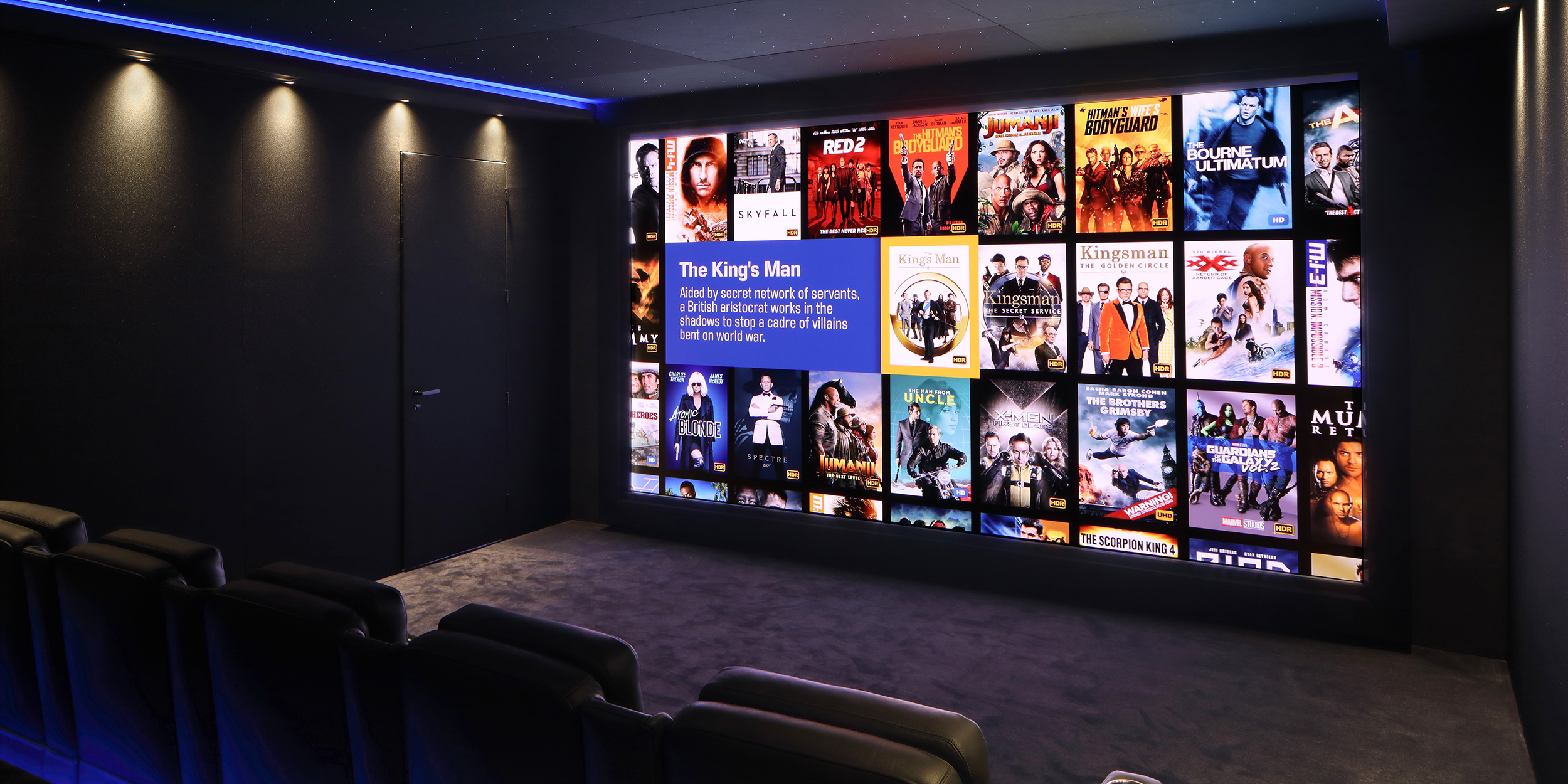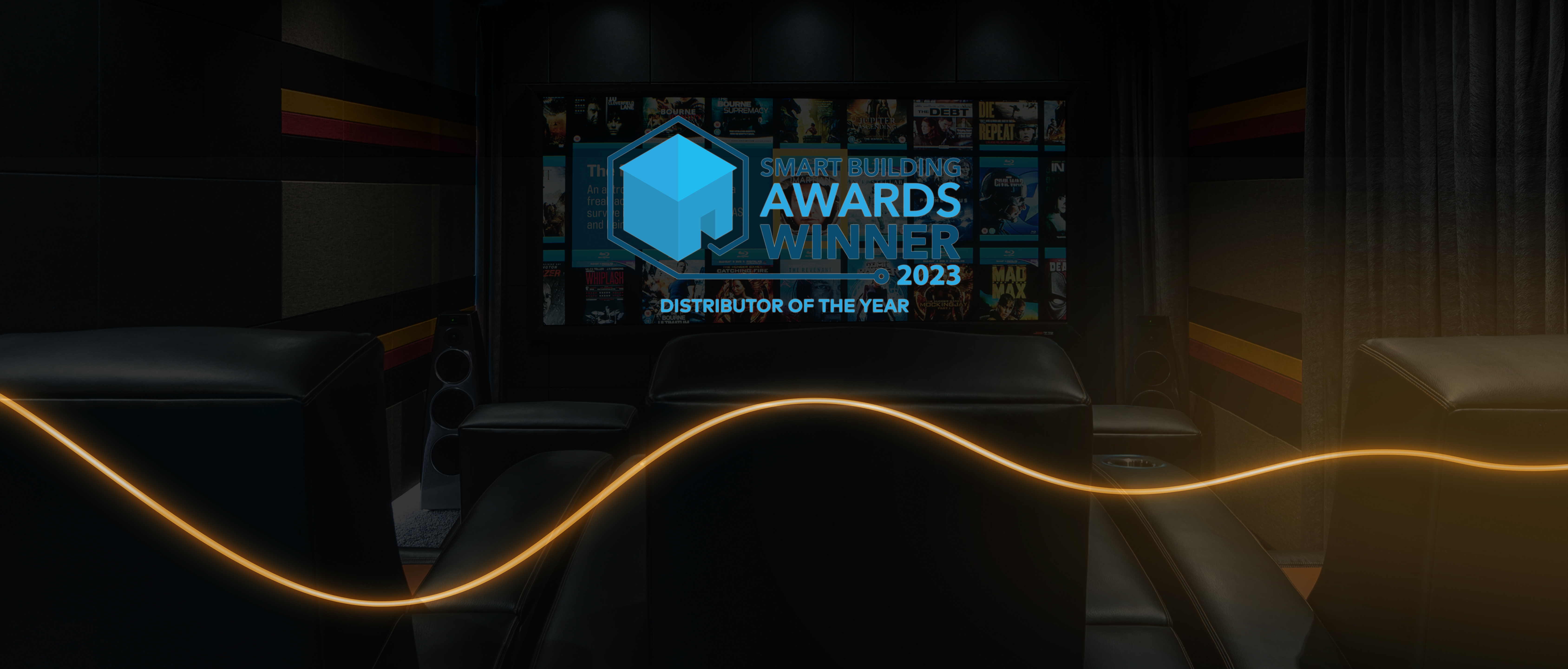Barry Sheldrick, Director of Sales at DbM and Bart Devos, Business Development Manager EMEA at Barco Residential recently joined us to discuss the latest trends in the projectors and screens market. Here’s what they had to say.
When talking about big-screen entertainment, the industry seems to be focusing on whether integrators and customers should choose between a projection set up or a super-sized LED screen.
It's great that there is interest and a buzz in the market around huge LED screens, but one thing that is obvious to us is that the two solutions have very different target applications. It shouldn’t really be a conversation of, ‘which option should we pick’ but instead, ‘which system is best for the environment.’
Full disclosure, Barco manufactures projectors and LED screens, and DbM supplies both options to its dealers, so we have no preference between the two solutions – we are supporters of both - but there is a real distinction between where we would deploy these two different systems. While a projector is suited to a dedicated cinema environment, a large LED screen is ideal for living spaces that have a lot of ambient light.

When you are looking at a dedicated cinema room with multiple seats and light control, then a two-piece projection system is without a doubt, the right choice.
A direct LED screen has some great advantages, but it also has some sizable disadvantages. A key issue is where you would put the loudspeakers – you can’t place anything behind a large solid panel. Yes, there are technologies to take the image height and move it to the centre of the screen, but you still can't beat having the speaker directly behind the screen. And the more rows of seats you have, the bigger that disadvantage becomes.
It's also a matter of considering that when you're watching a projection-based system, you're watching reflected light, which is easy on the eyes. Now, think about a direct view LED video wall, and you will have emissive light hitting your eyes. Imagine sitting in a completely dark environment and the screen performing at a peak light output of 600 nits. If that’s hitting your eyes for a period of two hours while watching a film, you are going to walk away with a headache. Of course, there are some products where you can turn down the brightness, but, ultimately, it doesn’t feel quite as natural as watching a two-piece projection.
In the industry, there’s a race towards higher brightness and higher nits, which is great, but there needs to be a balance to ensure the viewing experience is enjoyable. This approach seems to have been forgotten in the overall conversation and has to be considered.
And what about heat? LED walls generate a lot of heat, so you have to then bring mechanical cooling into the room and air-conditioning units can solve the problem, but also create another with the noise they generate.

If we move away from dedicated cinema environments and consider, for example, a penthouse with windows on all sides, then an LED screen is an absolutely brilliant solution because you're combating the brightest light we have – the sun. You can now watch the TV at all times of the day, with no contrast or brightness issues. And, consumer interest is currently riding high for these screens, which is great for our industry.
A big advantage for LED screens when installed in the right environment is the ability to change the shape of the picture since they are a modular solution. One of the big challenges we see in the UK is that we only have two and a half meter tall ceilings, so if you want to install a large TV that’s more than three or three and a half meters in height, you are touching the ceiling with a regular 1.78 ratio. The ability to support content by changing the shape of the of the LED screen to a 2.37 aspect ratio is super cool.
But don’t forget that LED screens are also pretty heavy, meaning that there are installation considerations to think about when putting this large weight on the floor or hanging on a wall.
Ultimately, whether it’s a projector or an LED screen, the image fidelity is brilliant on both systems. Neither of them has a real drawback in terms of watchability, enjoyment and immersion, they just have a different way of delivering it in a different environment.

Every time the DbM team has welcomed a dealer and their customer to its demo facility in Cambridgeshire, the reaction to the large LED screen and the big projection system in our cinema is hugely positive. They immediately understand the use cases for these products. It’s as simple as sitting in a low-slung sports car and then sitting in an off-roader and understanding the difference between the two.
Integrators need to have the confidence to explain to their customers why an LED screen isn’t suitable for a cinema room and why a projection system isn’t right for a large well-lit living space. It’s no different to them saying they aren’t going to put a living room speaker into the garden, or that they are specifying X control system over Y control system.
It’s important to ensure you have partnered with the right suppliers to ensure you have access to the demo facilities that can support you in this sales process and a sales team who will give you the confidence to sell the right solution for the right environment.